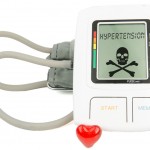Two separate studies recently found compelling data to recommend lowering blood pressure targets for high-risk individuals below the current guidelines. The much-talked about SPRINT, the Systolic Blood Pressure Intervention Trial, published in The New England Journal of Medicine, and a meta-analysis published in the The Lancet, both support the call for reducing blood pressure goals from less than 140 mmHg systolic (the top number of the blood pressure reading) to less than 120 mmHg.
CURRENT GUIDELINES
The Eighth Joint National Committee (JNC 8) is an expert panel recruited to provide guidelines for the treatment of hypertension using high quality evidence-based data. The most recent recommendations had eased up from the previous JNC 7, to keep the guidelines simple for physicians. Our goal was to create a very simple document, according to Paul A. James, MD, one of the lead authors of the guideline. We wanted to make the message very simple for physicians: treat to 150/90 Hg in patients over age 60 and 140/90 for everybody else.
SPRINT TRIAL
This is a study, sponsored by the National Institutes of Health (NIH), that set to examine whether or not the current target blood pressure of 140 mmHg should be reduced to less than 120 mmHg in adults with high cardiovascular event risk, but without diabetes.
This was a multicenter study that included more than 100 clinical sites in the Unites States. It launched in 2009, included 9,361 hypertensive patients over age 50 who were randomized into two separate groups. One was the standard treatment group, where participants received two separate antihypertensive agents. The second was the intensive treatment group, which received three separate antihypertensives.
The piece de resistance of this study was that the results were so striking the investigators decided to end it early, as the intensive treatment arm did significantly better. Patients had a 30 percent reduction in rates of heart attack, heart failure and stroke and a 25 percent reduction in risk of death compared to the standard treatment arm.
Previously, there was no clear evidence from large studies to answer the question of whether a more aggressive control would be beneficial or harmful, stated George Thomas, MD, Director of Cleveland Clinic s Center for Blood Pressure Disorders. We know that normal is less than 120, but when these patients are treated, we haven t aimed for that more aggressive approach before.
There were significantly higher rates of serious adverse events such as really low blood pressure, losing consciousness, imbalance of electrolytes, kidney damage or failure. Falls, on the other hand, were documented but not significantly different between the two groups. The degree and pattern of serious adverse events were similar in the overall 75 years of age or older cohort.
Jackson Wright, MD, PhD, of University Hospitals Case Medical Center in Cleveland, a senior investigator in the trial, stated that I think we have to keep in mind that any adverse profile will have to be compared against the dramatic reduction in cardiovascular events and a 25 percent reduction in mortality.
META-ANALYSIS
The meta-analysis and systematic review performed by researchers in the Lancet aimed to settle the dispute over whether there are indeed health benefits (i.e. reduction in heart attacks and strokes) of aggressive reduction in blood pressure for high-risk patients patients with cardiovascular disease, kidney disease or diabetes.
Their review included published data from 1950, up to 2015. In total, they identified 19 trials that included about 45,000 participants.
What they found was that relative risk reductions RRR (proportion of bad outcomes in a treatment group versus non-treatment or control group) were the following:
- 14 percent RRR for major cardiovascular events (heart attack 13 percent, strokes 22 percent, kidney disease 10 percent, eye disease 19 percent)
- No clear effect for heart failure, cardiovascular death, total mortality or end-stage kidney disease
- Reduction in major cardiovascular events was consistent across groups
- Absolute benefits were greatest in trials where patients had vascular disease, renal disease or diabetes
- Severe hypotension was more frequent with more intensive treatment regimens but absolute excess was small
Several major clinical guidelines on managing high blood pressure, including those of NICE and the European Society of Hypertension, have recently raised blood pressure targets from 130/85 mmHg to 140/90 mmHg for high-risk patients," said lead author Anthony Rodgers, Professor of Global Health at the George Institute of Global Health, Sydney, Australia. "But our robust evidence clearly shows that treating blood pressure to a lower level than currently recommended targets results in better health outcomes for patients.
This is a really important area cardiovascular deaths are our leading killer, most occur in high-risk people who have already had a warning sign and most occur among people with blood pressure levels which have, until now, widely been regarded as acceptable, said Professor Jicheng Lv, from Peking University First Hospital, Beijing, China, the study s co-author.
FUTURE GUIDELINES
These two studies, undoubtedly, are game changers for the future guidelines regarding blood pressure recommendations. The need for more aggressive lowering of blood pressure with regard to improving health outcomes seems apparent as discussed above. I believe, that the push to achieve target systolic blood pressure below 120 mmHg should not be devoid of recommending lifestyle modifications, weight loss and exercise. Extra caution must be taken to prevent harm to the more vulnerable elderly population.




